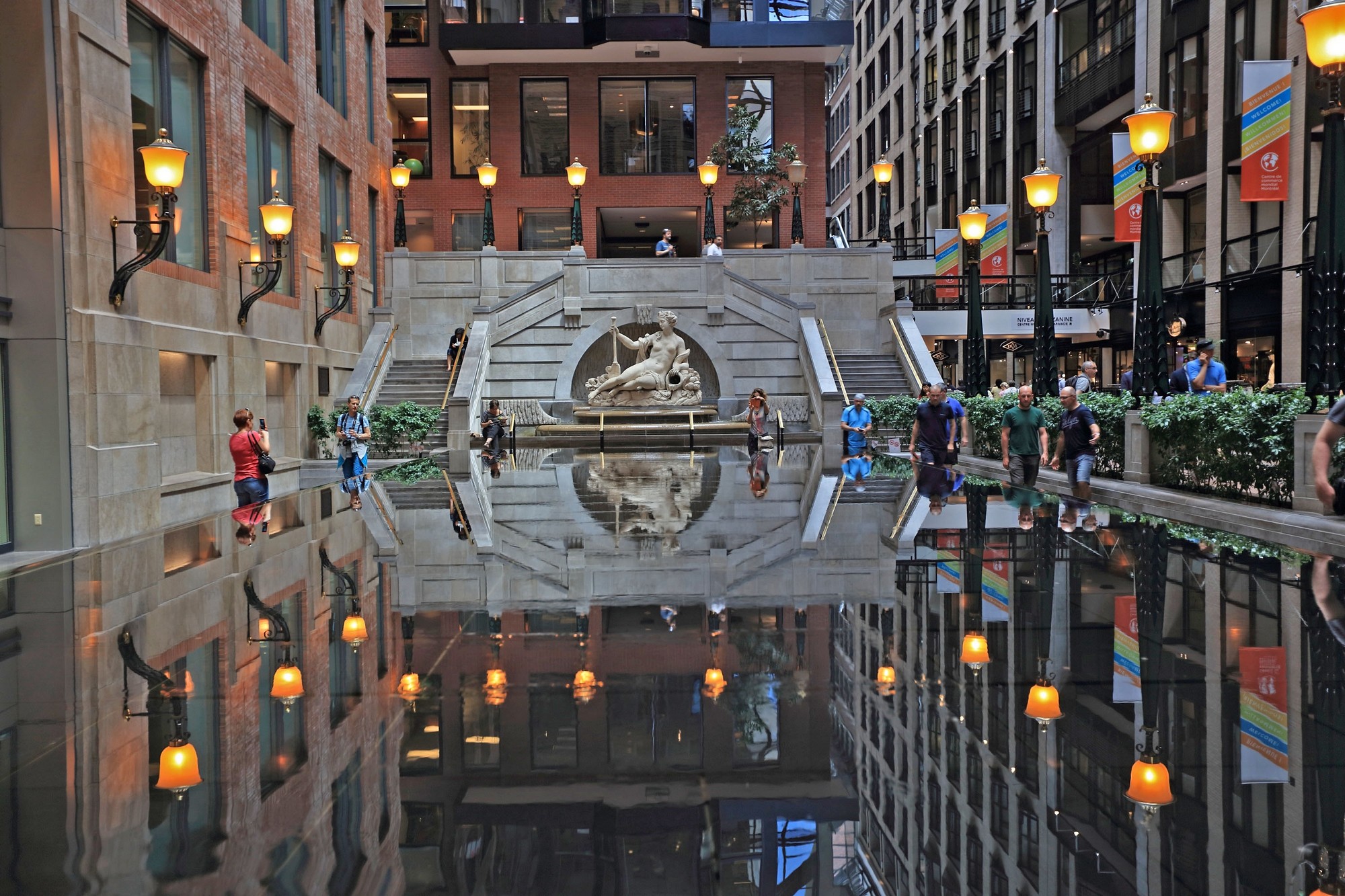Author | Jaime Ramos
Lying beneath the surface of some major cities are other underground levels. A perfect example of this, at an international level, is Montreal‘s underground city (RÉSO), in Canada. Why is it so famous?
These underground networks meet the requirements of some of today’s cities, such as providing places for people to escape harsh winter weather conditions; overcoming obstacles such as the limitations of urban spaces or enabling citizens to reclaim public streets. They can even become tourist attractions, like in Seattle. The most common analogy that springs to mind, is an anthill, but do underground cities such as Montreal’s underground city really resemble them?
Montreal’s underground city: what is it and why was it built

Montreal’s underground city is made up of a network of **more than 33 kilometers **of public, pedestrian and commercial tunnels. In functional terms, it joins public buildings with more than 2,000 businesses of all types below the earth, including stores, establishments, banks, residential complexes and hotels. This underground city also has subway and train stations and provides access to the local hockey stadium.
The essence of this underground city goes beyond prototypical mixed use developments. Since this urban belly allows 500,000 users to get about a city that has 1.76 million people in its urban center and 4.29 million in its metropolitan area.
The qualitative advantages are varied and common to the demands of many major cities: they stimulate the city’s economic growth and, by providing greater choice, they facilitate a more affordable access to housing, in particular, commercial land; they are exclusively pedestrian spaces, which increases urban security; with correct planning, they can be a relevant resource for the sustainability of a city; they can be a city’s sign of identity and, they are particularly key for strengthening the sense of community and social relations, which are so often suppressed by vehicles and concrete or, they are simply places where people meet and seek refuge from adverse climate conditions.
When was Montreal’s underground city built?

This large space of coexistence and cohesion was not designed overnight in Montreal. The first step involved its construction dates back to 1962, when it materialized below the city’s Plaza Ville-Marie, a commercial complex built to cover unsightly old railway tracks. This gave it a new use which also interconnected the Central Station with that of the Queen Elizabeth hotel.
This underground city emerged mainly thanks to the urban planner Vincent Ponte, who designed the original model and whose ideas paved the way for their growth and development.
Seven interesting facts about Montreal’s underground city.
Some interesting facts that define Montreal’s underground city are as follows:
- It covers an area of four million square meters in total.
- Depending on the location, the underground city drops between two and four levels.
- According to local authorities, it connects ten subway stations, two train stations and two bus terminals.
- It is home to 1,200 offices, 2,000 commercial establishments, more than 200 restaurants, 40 banks and 40 movie theaters, seven hotels and four universities.
- In Montreal, the maximum and minimum winter temperatures do not tend to exceed 0 ºC. While the underground city maintains pleasant springtime temperatures all year round.
- The underground city is not open 24 hours a day. However, it mainly follows the subway times, which run from 5.30 AM to 1 AM, seven days a week.
- Certain pets are allowed in the underground city, such as dogs. However, they are also subject to the specific regulations of each establishment. In the subway, for example, there are certain times established, which do not include peak times.
What can you do in Montreal’s underground city?
Of course, the underground city includes a vast number of activities that meets the leisure needs of the local population with tourist attractions. Some of the most appealing activities you can enjoy underground are:
- Ice skating. This is one of the underground city’s most popular activities. The 1000 De La Gauchetière skating rink lies below Montreal’s tallest skyscraper that goes by the same name.
- Visit the wax museum. The Grevin Wax Museum exhibits 120 reproductions of celebrities in wax, many of whom are related to the city’s history.
- The Eaton Center and Les Cours Mont-Royal shopping malls. The first shopping complex has its own site within the underground city. It is one of the crucial shopping malls of the entire underground network. The latter, more of an upscale shopping mall, offers a unique vision between the levels in which the staircases, without reaching the madness of Escher’s work, are almost a symbol of how the underground space has been conquered.
- The Art Souterrain Festival. This organization has always taken advantage of the benefits and artistic impact of the underground city to surprise visitors. In fact, its raison d’être is based "on a strong model with the main intention of getting artworks out of traditional exhibition places."
These activities, among others, reflect the economic, social and cultural importance of Montreal’s underground city. It is undeniable that its concept as an urban site continues to expand and inspire other cities around the world.
Images | Wikimedia.commons/Martin Cígler, Wikimedia.commons/Deror_avi, Wikimedia.commons/zoxcleb






















































